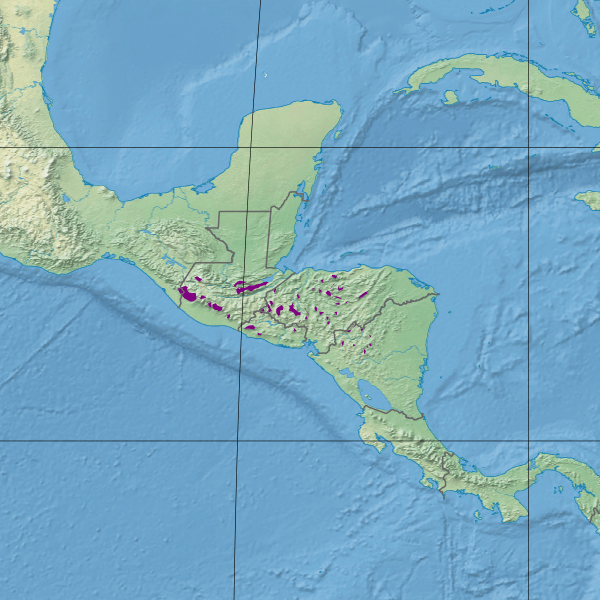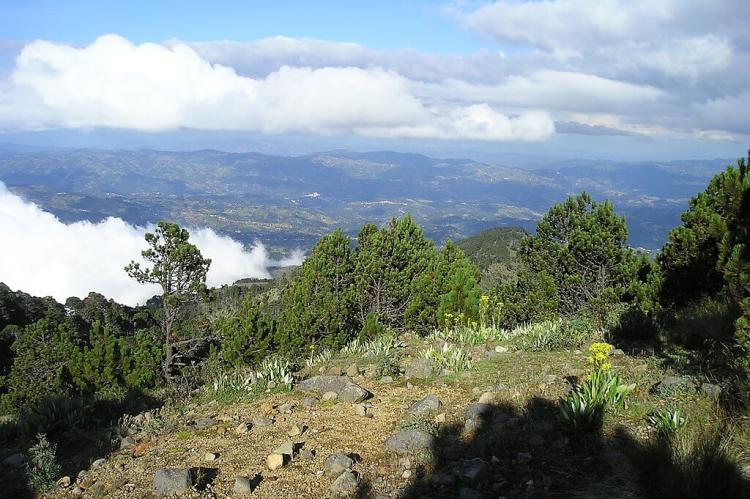Central American Montane Forests: Guardians of Biodiversity in the High Elevations
The Central American montane forests are forested areas located on the highest mountains in Central America, spanning from southern Mexico to Nicaragua. These forests showcase a diverse range of vegetation and wildlife that have adapted to the region's unique conditions.
Central American Montane Forests
Guardians of Biodiversity in the High Elevations
The Central American montane forests ecoregion is a collection of over 40 forest patches scattered across Central America's highest mountains. This region is ecologically significant and exhibits unique adaptations. It stretches from southern Mexico through Guatemala, El Salvador, Honduras, and Nicaragua and showcases diverse vegetation and wildlife on the elevated canvas of the region.
Geographical Overview
Surrounded by the Central American pine-oak forests at lower elevations, with exceptions in northern Guatemala, northern Honduras, and central Nicaragua, where it converges with the Central American Atlantic moist forests, the montane forests exhibit an intricate mosaic of vegetation types that change with altitude. From tropical rainforests at lower elevations to mist-laden cloud forests at higher altitudes, these forests host a mix of oak, pine, and other evergreen species.
Altitude, Climate, and Distinctive Flora
At elevations ranging from 1,000 meters (3,280 feet) to over 3,000 meters (9,840 feet), the Central American montane forests boast cooler temperatures than their lowland counterparts. Frequent cloud cover enhances humidity, creating an environment where a variety of vegetation thrives. The southern limits for conifer distributions, including species like Abies, Juniperus, Cupressus, and Taxus, coexist with broadleaved evergreen forests dominated by oaks. Noteworthy is the endemic agave in Guatemala, adding a unique touch to the floral diversity.
Biodiversity Marvels
The montane forests are renowned for their high biodiversity, with a remarkable array of species adapted to the specific climatic conditions of the region. This ecoregion is a haven for iconic animals, including the resplendent quetzal and the elusive tapir. However, the true marvel lies in the endemic species that call these forests home. With its distinctive appearance, the horned guan and a subspecies of the resplendent quetzal (Pharomacrus mocinno mocinno) add an exclusive charm to this biodiverse sanctuary.
Avian Migrations and Endemism
One of the ecoregion's unique features is the intricate interplay of local and intercontinental migrations. Over 20 bird species undertake a remarkable journey, flying from North America to Central American montane forests to spend their winters. Among these migratory birds, the horned guan and the subspecies of the resplendent quetzal stand as proud symbols of the ecoregion's rich avian diversity.
Conservation Challenges and Efforts
While the upper reaches of these mountains remain relatively intact due to their natural challenges, the lower slopes have witnessed significant modification. The encroachment of agriculture, logging, and urbanization has led to habitat loss and fragmentation. Indigenous populations, reliant on traditional agricultural practices, face challenges as they outgrow their historical footprint.
In response to these challenges, numerous protected areas and conservation initiatives have emerged to safeguard the Central American montane forests' biodiversity and vital ecosystem services. However, challenges persist, and efforts are underway to strengthen enforcement and infrastructure to ensure the continued protection of this invaluable ecological treasure.
Conclusion
The Central American montane forests ecoregion unfolds as a living testament to the intricate dance of biodiversity in the face of geographical challenges and human activities. As a learning environment, it offers a profound exploration of the interconnectedness of ecosystems, the delicate balance required for conservation, and the unique adaptations that allow life to thrive amidst the cool mist and cloud-kissed peaks.

Map illustrating the extent of the Central American montane forests (in purple).
